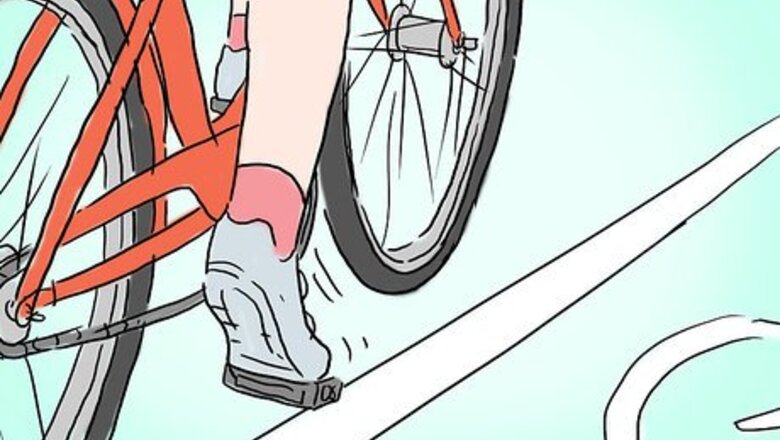
views
This article is based on right-hand traffic; if you live in a country with left-hand traffic, please bear this in mind when reading the directions.
Riding Safely on the Road
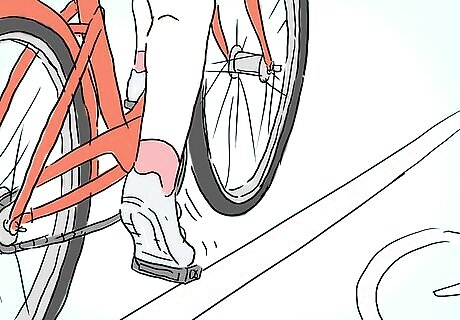
Ride in the direction of the traffic. Riding against traffic on the wrong side of the road is illegal and increases a cyclist's risk dramatically because it increases closing speeds and turning motorists are likely to not even look for traffic in the direction from which a wrong-way cyclist would be coming.
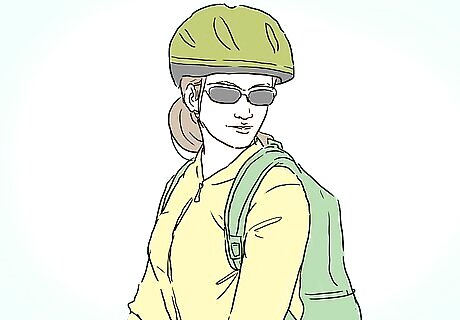
Prior to adjusting course left or right, always first look back behind you to make sure it's clear, and then signal your intent. Learn to be able to turn your head to look back behind you without veering off course. This can be done by practicing looking back while following a stripe in an empty parking lot. This skill is essential any time you need to move left or right from your course, like when you need to move over for a truck stopped at the curb or some other obstacle. Just because it's not your fault that you need to change course, does not mean that you have right of way to move over. If other traffic is using the adjacent line of travel, you need to yield to them, or negotiate for right of way to move there (see below). It's important to practice the looking back skill because many cyclists, even experienced ones, don't realize how much they veer when they look back. Looking back to make sure it's safe to move over is of no help if you veer left right in front of overtaking traffic as you look back.
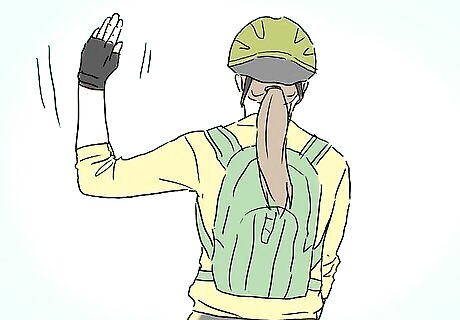
Signal your intentions to other road users. That is to say when turning or adjusting laterally on the roadway. Holding your arm straight and parallel to the ground with open palm faced forward is much more clear and attention-grabbing than an arm halfheartedly lifted and held in position with a bent elbow. Before taking your hand off the handlebar, be sure to scan the road ahead for obstructions like stones, potholes, or anything that can jerk your wheel. Not only does signaling let them predict your next move, but it gives cyclists a reputation of courtesy.
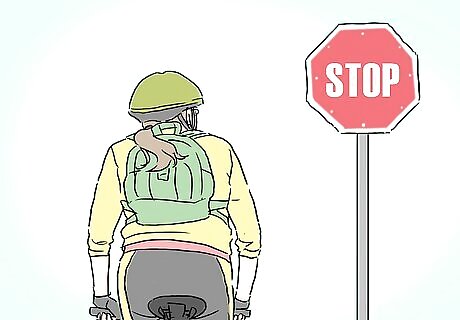
Stop for stop signs and watch for traffic. Obey traffic lights and signals, as well.

Weigh the pros and cons of listening to music. Some studies suggest cyclists are up to 10 percent less responsive to potential dangers, but other studies suggest that listening to music may not present much risk to your safety as long as you avoid dangerous environments, keep the volume low, and don't use noise-cancelling headphones. Additionally, listening to music can increase your endurance by about 15 percent.
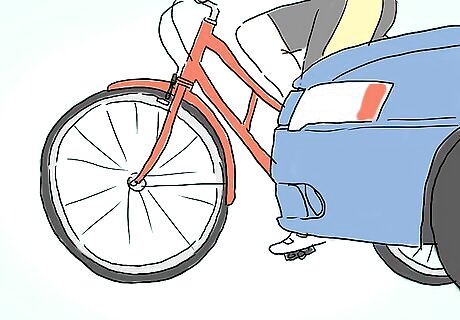
Choose a conspicuous lane position. Realize that many motorists may overlook cyclists, especially those riding inconspicuously near the road edge. Some motorists are irritated by the presence of cyclists and seek to make it harder for you to drive near them. Don't get angry; if they honk that means they've noticed you! Convey gratitude by smiling, nodding or waving. Stay calm, keep your wits about you, and remain focused. A mirror can help you know when a motorist is approaching from behind. A well-timed look back, nod or even slow/stop arm signal can be very helpful in communicating to the motorist that you are not oblivious to their presence and your effect on them, which alone can often nip-in-the-bud a potential road rage situation.
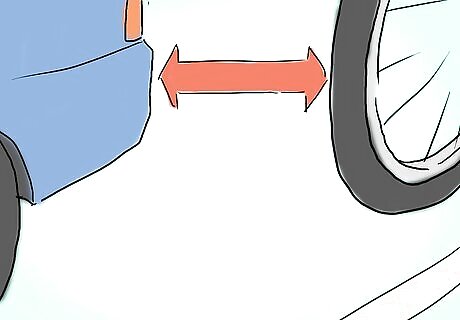
Track your tires at least five feet from the side of cars parked at the curb to eliminate the risk of being struck, or being caused to swerve in front of overtaking traffic, by a suddenly opened door. Remember that even at 10 mph you're traveling the distance of an entire car length every second. If a door opens suddenly in front of you, you may not even have enough time to react, much less stop. And if you instinctively swerve or are knocked left by the opening door, you could be hit by overtaking traffic. Sure, they're legally obligated to look first before they open the door, but are you going to trust your safety - perhaps even betting your life - that they always will without exception? If you regularly ride in door zones, it's only a matter of time before you get doored. Since car and truck doors extend out as much as three-and-a-half feet when open, tracking five feet away allows your two-foot-wide body to be clear of an open door plus a minimum of six inches of error margin. Any closer than five feet puts you in the door zone and in serious risk. Don't be lured into riding in a door zone by a bike lane. That paint on the ground offers no protection!

Don't try to share lanes with other traffic that are too narrow for safe side-by-side sharing. Riding far right in lanes less than 14 feet (4.3 m) in width is a great cause of conflict and consternation in traffic. It makes the cyclist less conspicuous and invites motorists to try to squeeze into the lane side-by-side with the cyclist, causing them to either pass with insufficient safety margin, or realize too late that they have to at least encroach in the adjacent lane to pass safely. Alert them early of the condition that lane sharing is not an option by clearly controlling the lane by riding near the center of the lane, or even left of center, so they have the time and space to plan a safe lane change and pass.
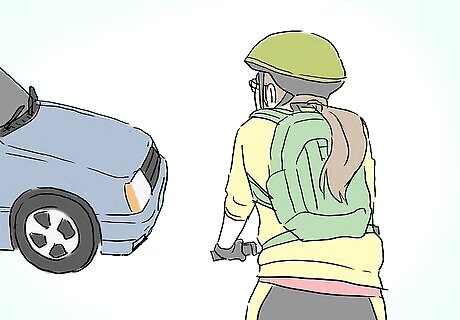
Share the road wisely. Between intersections when faster traffic is present, if the traffic lane is wide enough for traffic to pass you safely within the lane, keep to the side and make it easier for the drivers to leave you room. But during significantly long gaps in traffic, a more conspicuous position well out in the traffic lane helps grab the attention of the next driver who approaches, discouraging them from choosing to attend to a distraction until after you've been safely passed. A rear-view mirror can help you notice when faster traffic is approaching, and to let you know when to move aside, usually after they've slowed indicating they've noticed you, but before they get irritated. Never use a rear-view mirror glance in place of a head-turn look back prior to moving laterally on the roadway.
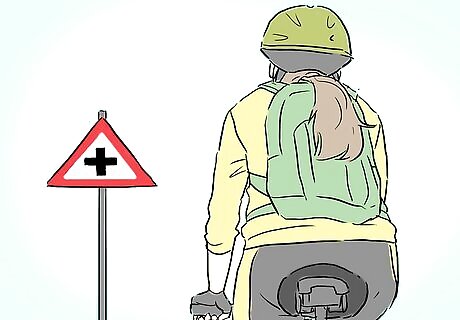
Know that most of the risk is in front of you, especially from traffic turning and crossing across your path. As you approach any intersection, junction or place where turns may be made, regardless of your intended direction, choose a conspicuous and predictable lane position with plenty of buffer space around you. The savvy cyclist adjusts for the proper position at least 100–200 feet (30.5–61.0 m) prior to the intersection, if she is not already positioned there prior to that.
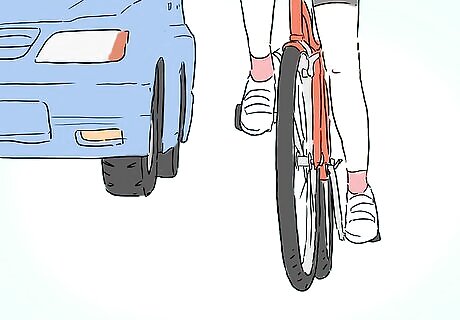
Watch for cars on your right that are turning right. Turning motorists often check only for traffic where vehicular traffic is expected, sometimes overlooking pedestrians or cyclists positioned elsewhere. But sometimes they overlook even properly positioned cyclists (just like motorcyclists or even cars are sometimes overlooked), which is why the extra buffer space is important. Look for evidence that you've been noticed - and eye contact does not count (someone can look right at you and still not "see" you) - before relying on being noticed. Pay attention to where they are looking, which way their tires are turned, if they're rolling or completely stopped, etc. It's only a matter of time before someone overlooks you and cuts you off... so be ready and not surprised when it happens!

Moving laterally on the roadway sometimes requires not only looking back and signaling, but often negotiation is entailed. Remember that signaling your intent to move does not give you the right of way to move. Any traffic already moving into that space needs to yield to you first. So signal clearly and look back, waiting for others to yield to you before moving. If you need to traverse across several lanes, move with looking back, signaling and negotiation for each lane change, one at a time, just as you would if riding a motorcycle.
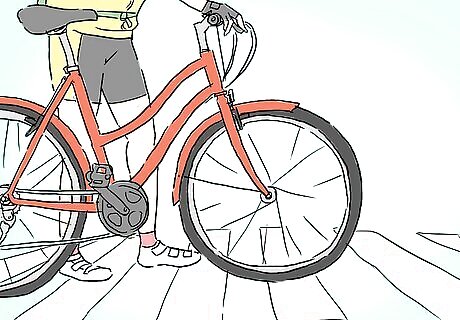
If you are turning left, use the left turn lane. Start preparing early so you have plenty of time and space to move across the road one lane a time with signaling and negotiation as needed. If you are not comfortable with this, pull over, get off your bike and walk it through the intersection using crosswalks based on pedestrian rules of the road.

If you are going straight, don't use the right turn lane or the part of the road normally used by right-turning traffic. Other drivers are likely to not expect straight-through traffic to be traveling there. Prior to the intersection, move left if you're not already controlling the rightmost lane that goes straight.
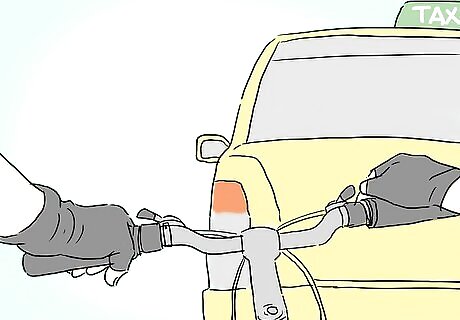
Don't pass slowing or stopped traffic on the right that can and might turn right. Instead, merge left to get behind them, or even further left to pass them on the left. Beware of motorists that pass you, and then slow down enough for you to catch up and start passing them... on the right. More often than not, they are slowing in order to turn right... that's you're cue to look back and merge left to pass them on the left. Don't shoot the gap! If you are passing stopped cars on the right, beware of the possibility of a passenger door suddenly opening - especially if it's a taxi. Passing on the left, with more than four feet of passing space, is much safer, and usually faster.
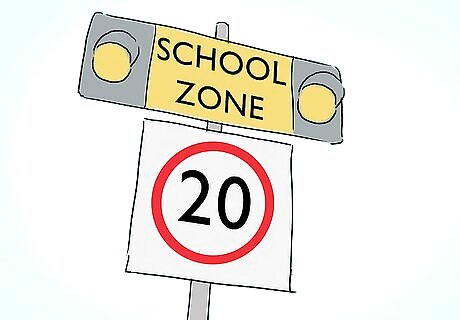
Know the speed limits. It is important for you as a cyclist to avoid speeding, and to obey all speed limits in slow zones (such as around pedestrian crossings, and school zones). Even if you aren’t breaking the speed limit, don’t overdo it when it comes to the speed.
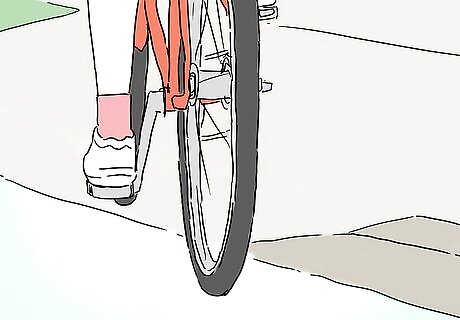
Know when to ride on the road, on the shoulder or in the bike lane. The rules will vary from jurisdiction to jurisdiction but, generally, shoulder use is optional but never required, and bike lane use is generally only mandatory when faster traffic is present and they can be safely and reasonably used. Beware of glass, rubble and other debris that tends to collect in shoulders and bike lanes because they are not being continually swept clean by vehicular traffic as the rest of the road is. Take into account the extra risk you assume by riding as far right as bike lanes and shoulders usually are because you are less conspicuous there (less conspicuous to drivers approaching from behind as well as to those ahead of you). Being so far right also shortens your sight lines to potential hazards in front of you, and reduces the amount of safety/buffer space between you and potential hazards near the edge of the road. In short, decide where to ride by imagining where you would ride if there was no stripe per the considerations given above, and ride there. Remember that stripes are in fixed locations, and the best location for you to ride depends on the current situation and conditions, so don't blindly rely on bike lane stripes for guidance.
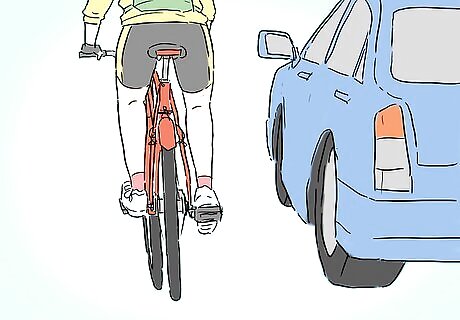
Don't ride in bike lanes that are marked within the door zone of parked cars. Remember that bike lanes are usually only 4–5 feet (1.2–1.5 m) wide, so even if it's a relatively wide 5' bike lane adjacent to parked cars, you should not ride in that bike lane. The closest you should be to the parked cars is by tracking on the bike lane stripe.
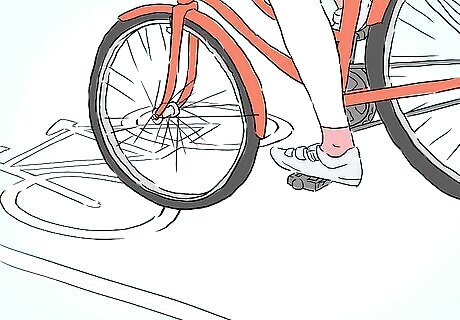
Use of cycle tracks running next to the road are rarely legally required, but can be preferred, especially for relatively slow recreational riding. Even more than when riding in bike lanes, be aware of the additional risk assumed by riding where traffic is easily overlooked, whenever approaching any intersection with a road or driveway.
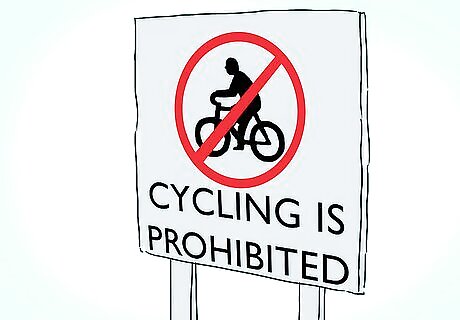
Avoid cycling on the sidewalk or footpath. Generally, it is not a good idea to ride on the sidewalk and in many jurisdictions, it is illegal to do so. One clear exception to this is where a sidewalk has been specifically designated as a marked bike path but be careful still, as it is likely you will still need to share it with pedestrians, as well as cyclists coming in the opposite direction. On the whole, many roads are generally smoother, making the ride easier, quicker, and more comfortable than trying to navigate a bumpy, frequently obstructed sidewalk.
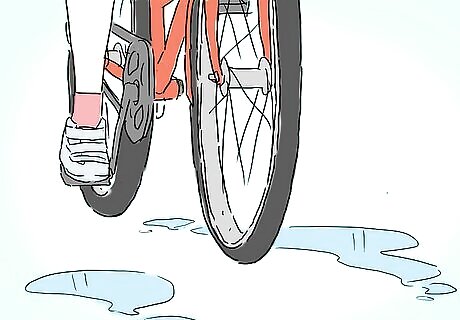
Take extra caution when cycling in wet conditions. This is especially true if these are the first rains for some time: oil and grease in the tarmac is free to float on the surface. Therefore do not lean into curves and be wary of slick markings and drain covers. In icy conditions extreme caution is required, but consider delaying your journey until after midday or canceling it altogether. Having large wheels will help you ride in wet conditions.

Cross railway/railroad lines at right angles. The tires can otherwise get caught in the tracks, or when wet the wheels will slip.

Always carry identification, like a medical ID bracelet or ID card in your seat bag. This can be invaluable to EMS responders if you're unconscious.
Checking your Bike
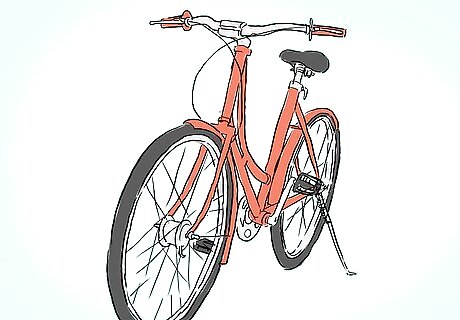
Check your cycling equipment. Before you even set out, it is important to ensure that your bike is roadworthy and safe. This is especially important for aging bikes. Checking your bike means looking at the following: Air - are your tires inflated adequately? Make sure there aren't any holes or other damage to your tires. Your brakes - do they work, are they clean? Your chain - is it clean, free of debris, and able to turn with no problems?
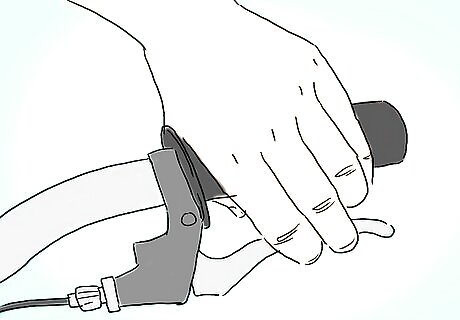
Check the brakes. Wheel your bike around a flat surface, pulling the brake levers on and off. If they do not work, and you're not sure how to fix them, contact your local bike shop and ask them to help.
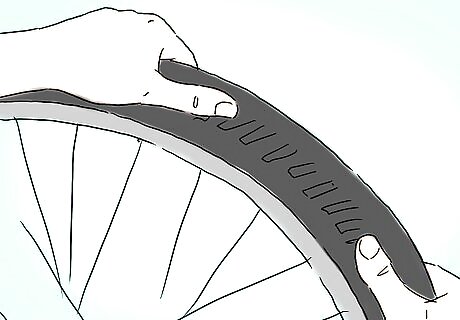
Check the bike's tires. Put the whole tire into a small bowl of water. See if there are any bubbles coming out. If there are any bubbles, it means your tire is punctured and you can get it fixed by a bike shop or do it yourself. Repeat for the other tire.
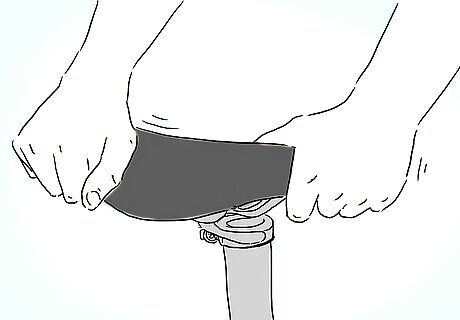
See if the bike is the right height for you. This is very easy as all you need to do is sit on your bike and make sure that the tips of your toes touch the ground (and nothing else). Adjust the bike seat as needed, and the handles too.
Dressing Appropriately
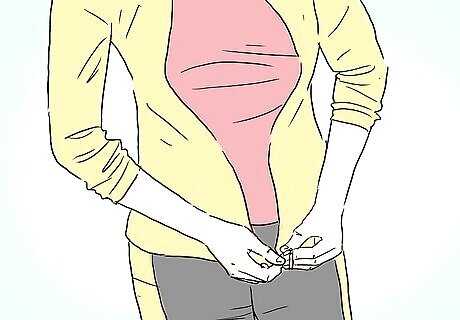
Wear bright clothing, a reflective vest, or have flashing lights on you or your bike. These all increase your visibility. When buying t-shirts or tops for cycling make it a policy to buy bright or at least white colors. You can also add reflector lights or reflective tape to your backpack if you're wearing one.
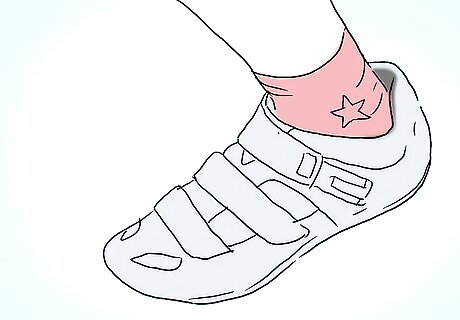
Wear comfortable shoes. Riding a bike in high heels or flip flops is never a good idea. Wear shoes that fit comfortably, are flat soled, and have no dangling pieces that could become caught in the bike structure and spokes. Tuck your shoelaces into your shoes.
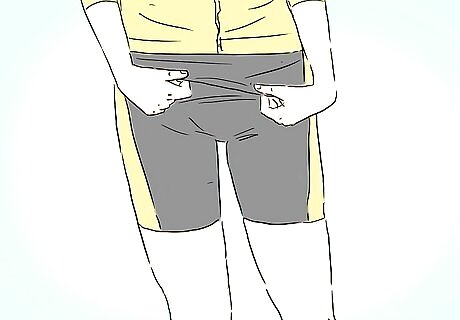
Use trouser elastics or ties. They will hold back long pants that are threatening to flap into the wheel spokes, or become dirtied by the chain grease.
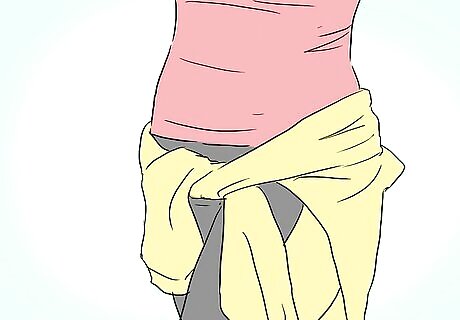
Don't tie clothing around your waist. It could unexpectedly come loose and wrap around your wheel, throwing you head-first into the ground or road. It could also become entangled in the chain or obscure your rear light and reflector.
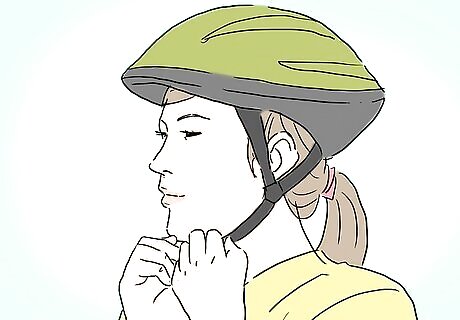
Wearing a helmet is always a good idea when cycling. In some places, you have no choice but to wear a helmet by law. Yet, even where this is not legally required, it's a good idea to wear one to augment your safety - head injuries are the most common fatal injuries sustained in bike accidents.

Wear eye protection. Dirt, pebbles, or even bugs can fly into your eyes, causing temporary vision difficulty. A pair of bicycle-appropriate glasses will help prevent this.
Being Seen
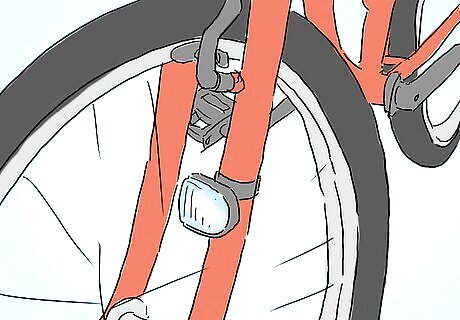
Use appropriate lighting. Motorcycles are required to have a front headlight on at all times, because they are smaller and harder to see than other vehicles. A bicycle is smaller yet. Nighttime riding usually requires a front white light as a minimum, although adding other lights will help to increase your visibility, along with reflective clothing as discussed above. Lighting is useful both for day and for night riding: During the day, a flashing front light is good because it attracts more attention. At night, use a constant front light rather than a flashing one. Its steady stream of light will provide adequate visibility to drivers, while a flashing front light at night soon gets to be annoying as it strobes your view. Whenever it gets dark outside, turn on your headlight. This means the moment that you feel your eyes straining to see well, even if the sky is not pitch black; remember too that drivers need to see you during twilight, so err on the side of turning on the light earlier rather than later. Put a red LED strobe or beacon on the back of your bike or your helmet. It is OK for this light to flash or have special patterns, because it disrupts night vision less than the white front lights, and because drivers do not count exclusively on your rear light to gauge their distance.
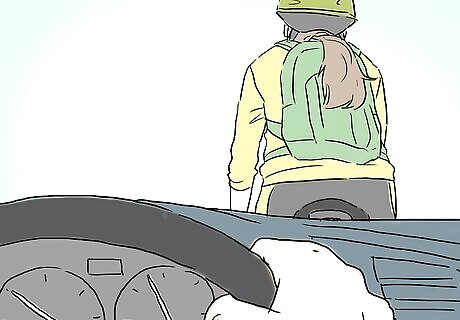
Use conspicuous lane positioning. Riding a few feet one way or the other might not seem like it should make a big difference in terms of being seen since you should be in someone's field of view either way, until you think about drivers' "zone of attention" rather than their field of view. Being within their field of view is usually not enough to be noticed - you have to be in a place that makes you relevant to them to be noticed - be where they are paying most of their attention. While being in the "motorcyclist position" in the traffic lane does not guarantee that you'll be noticed, it makes being overlooked much less likely, and gives you a better vantage and more buffer space from hazards. Also, if you have a mirror, being well out in the lane makes it easy to determine when you are noticed, since motorists obviously slow down when they notice a cyclist up ahead in "their lane". If you're off to the side, then they often don't slow down even if they do notice you, so you have no way to discern those who have not noticed you from those who have. You can always temporarily move aside to let faster traffic pass, as being conspicuously well out in the traffic lane is the best way to be noticed.
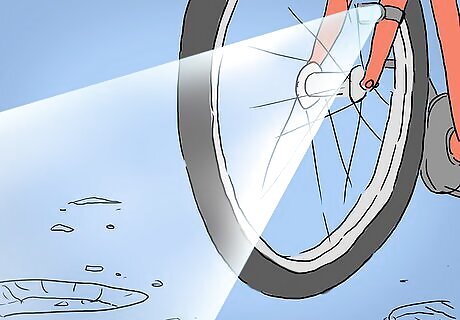
Take care at night. Cycling at night can be extremely dangerous. Always travel on a well lit road or path with no debris or potholes. Go slower than you would in the daytime, as you still need enough time to react to danger, and the lower visibility makes night cycling dangerous for this reason.
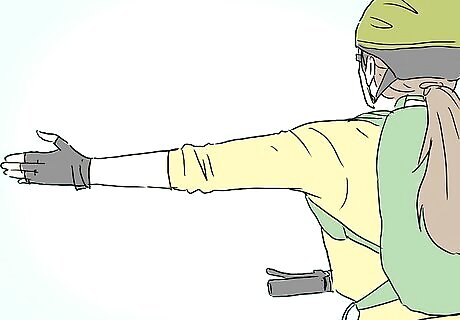
Use hand signals properly. Hand signals are vital if you are going to turn. This is especially important for left turns, because they involve crossing traffic. Check your local, state, or national traffic laws to determine which signs are most appropriate for your location. Some common examples include: To make a left turn, extend your left arm straight out sideways. To make a right turn, extend your left arm out sideways, bent at an upward 90-degree angle, or extend your right arm straight out sideways. To slow or stop, extend your left or right arm sideways, bent at a downward 90-degree angle.
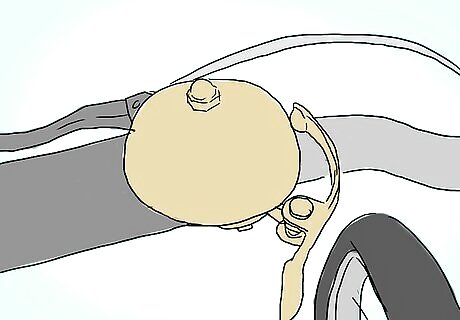
Give adequate warning. When you are passing pedestrians or other cyclists, it is essential that you warn them of your presence. Not only is this polite, but it reduces the chance of collisions, because pedestrians are less likely to suddenly swerve into your way, and they may move over, keeping you out of traffic. A bell, or a loud voice "On your [Left / Right]", "Passing" are good ways to attract attention.
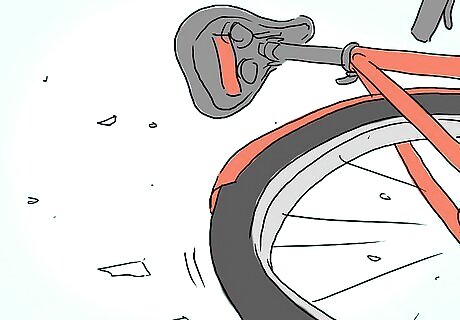
Watch for parked vehicles. When riding past parallel-parked vehicles, leave enough room for the vehicle door to swing completely open just as you are about to pass. Getting "doored" can cause serious injury and even death.
Improving Your Child’s Bike Safety
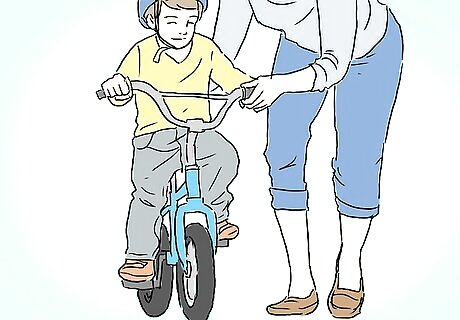
Teach your children how to ride safely in a completely safe place. Let children learn at their own pace and offer lots of encouragement. They will fall off, so be prepared with hugs and motivational talk to get them back to trying. Be patient at all times.
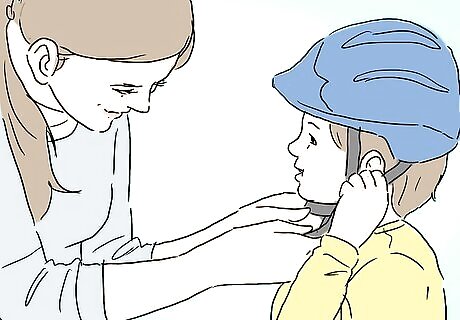
Ensure that children always wear a helmet when riding. This should feel like "second nature" to them.
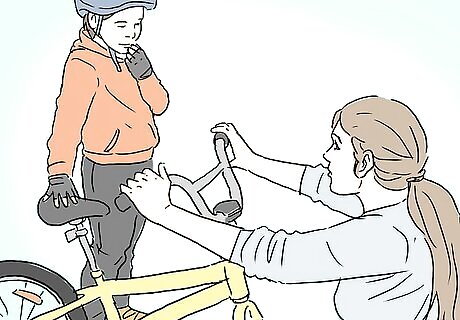
Explain to older children that riding at high speed could seriously hurt them. Discourage them from doing this and warn them about the dangers of not holding onto the handle bars or going down steep hills too fast.
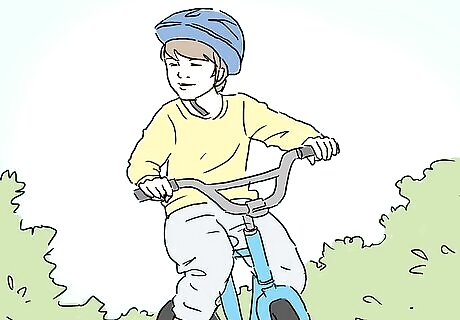
Find safe places for children to ride for fun, and safe routes to school and other places. As a person responsible for your children's wellbeing, it is up to you to take the time to scout out good routes and places with your children where they can ride in safety.















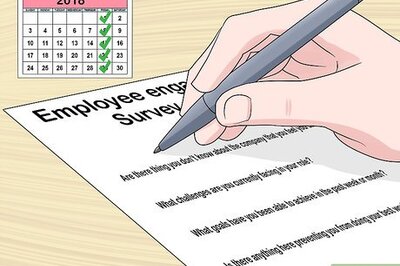


Comments
0 comment